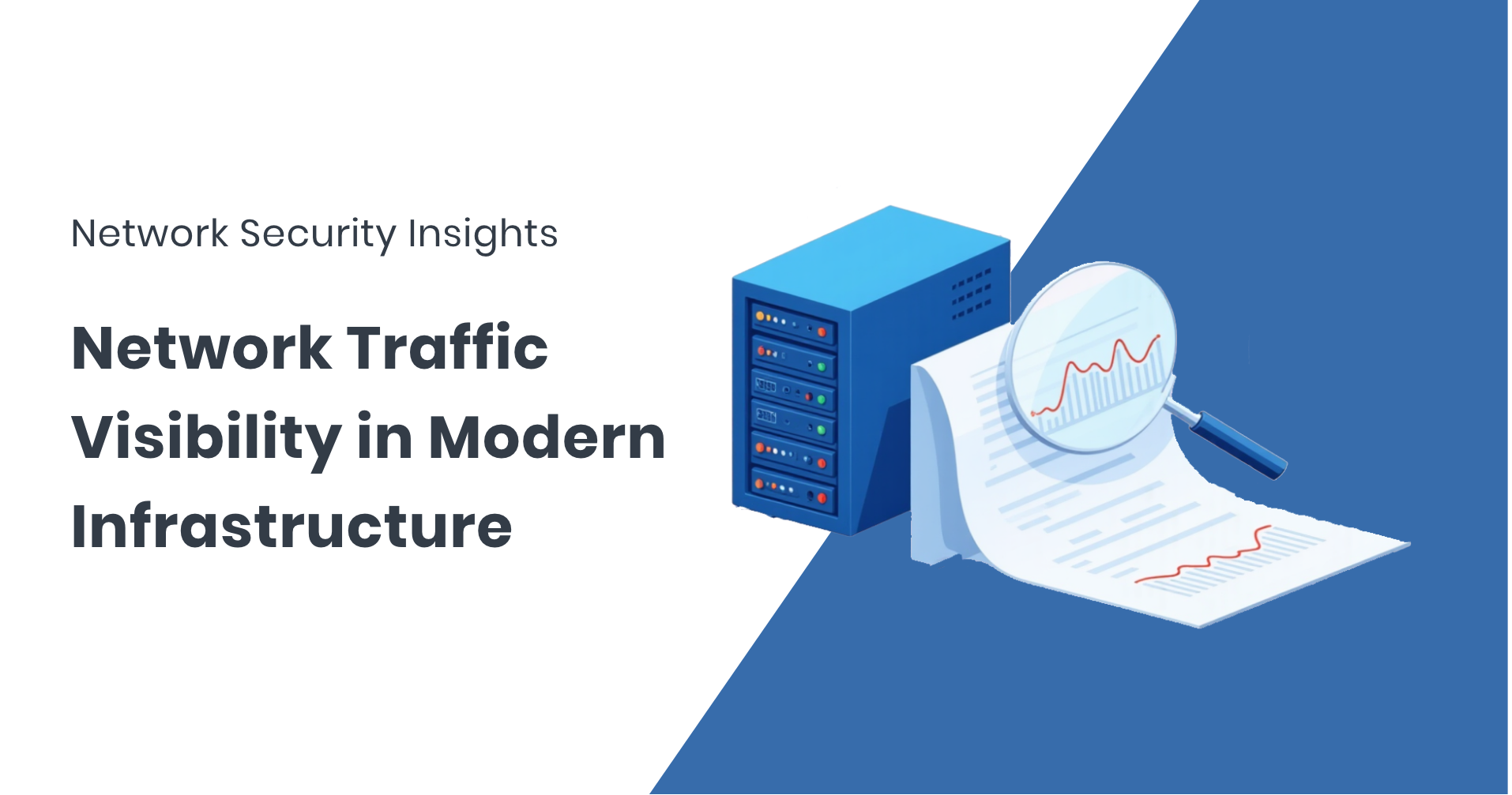
In 2025, network traffic visibility isn’t just a technical requirement—it’s a strategic necessity. As networks grow in size and complexity, visibility has become critical to performance, security, and resilience. Without it, network engineers and security teams are flying blind in an environment that’s increasingly fast, fragmented, and encrypted.
In this blog post, we’ll break down:
- What modern network traffic visibility means
- How the latest trends in observability are reshaping the space
- Key challenges organisations face in 2025
- How FastNetMon helps you achieve scalable, real-time visibility at speed
What Is Network Traffic Visibility?
Network traffic visibility is the ability to monitor, analyse, and act on the data flowing through your network in real time. It gives you situational awareness across your infrastructure—whether on-prem, in the cloud, or at the edge.
At its core, visibility helps you:
- Detect and mitigate threats before they cause disruption
- Optimise performance by identifying bottlenecks or misconfigurations
- Investigate incidents quickly with historical traffic data
- Comply with security and regulatory frameworks like NIST or ISO 27001
In 2025, visibility goes beyond flow records and SNMP polling. It means understanding what’s happening at every layer—from endpoints to services to user behavior—across an ever-expanding mix of technologies.
Why Visibility Has Gotten Harder
Today’s networks are anything but simple. The following trends have made traditional visibility tools and methods less effective:
- Encryption everywhere: Over 90% of enterprise traffic is encrypted using protocols like TLS 1.3 and QUIC, limiting the usefulness of payload inspection.
- Cloud-native complexity: Microservices, Kubernetes, and service meshes introduce east-west traffic that often bypasses traditional monitoring tools.
- Hybrid infrastructure: With workloads spanning cloud, on-prem, and edge, gaining end-to-end visibility is more challenging than ever.
- Data volume explosion: High-fidelity monitoring can generate terabytes of flow and packet data per day, straining storage and analysis pipelines.
Put simply: the more distributed and encrypted your network becomes, the more sophisticated your visibility solution needs to be.
What’s New in Network Traffic Visibility (2025 Edition)
To meet these challenges, organisations are turning to a new generation of observability tools and practices. Here are the key developments shaping the space in 2025:
1. Flow-Based Visibility with Enriched Context
NetFlow, IPFIX, and sFlow remain foundational for scalable monitoring. But today’s tools enrich these flow records with metadata—like geolocation, AS numbers, TLS fingerprints, or BGP info—to unlock deeper insights.
FastNetMon excels here: We ingest flow data from all major vendors and enrich it in real time, helping you identify anomalous patterns, trace attack sources, and make faster decisions.
2. Encrypted Traffic Analytics
Full payload inspection isn’t feasible or legal in many contexts. Instead, visibility tools are now using:
- TLS fingerprinting (JA3/JA4) to classify applications without decryption
- Flow-based heuristics and ML to detect threats within encrypted traffic
- Metadata analysis to track suspicious behavior without touching sensitive content
FastNetMon supports JA3 detection, making it easier to classify traffic and spot anomalies—while remaining compliant with privacy regulations.
3. Programmable Observability
With APIs and infrastructure-as-code now standard, visibility tools must be programmable and integrable. Engineers want to automate alerting, reporting, and mitigation through CI/CD pipelines and monitoring platforms.
FastNetMon delivers:
- REST APIs for automation
- SQL-based dashboards
- Export to tools like ClickHouse, Prometheus, InfluxDB, and more
This allows you to plug FastNetMon directly into your observability stack—whether you’re running a NOC, SOC, or both.
4. Cloud-Ready, Edge-Aware
Hyperscalers offer native traffic mirroring (like AWS VTAPs or Google Packet Mirroring), but they often lack full visibility and control. In hybrid or edge deployments, gaps in visibility can become blind spots attackers exploit.
FastNetMon helps fill these gaps by offering consistent, flow-based visibility across distributed environments. Whether you’re monitoring cloud workloads, core routers, or IoT edge networks, FastNetMon helps you maintain visibility without adding complexity.
Challenges You’ll Face—and How to Prepare
Even with the right tools, visibility comes with its own challenges. Here’s how to think about them in 2025:
- Scale: Visibility at 100 Gbps+ requires high-performance processing and storage. FastNetMon is optimised for massive scale, using ClickHouse to store and query petabytes of data without slowing down.
- Fragmentation: Different environments (cloud, on-prem, containers) often require different monitoring approaches. FastNetMon provides a central point of flow aggregation and enrichment—helping unify your visibility layer.
- Compliance: Regulations like GDPR, HIPAA, and national cybersecurity laws require strict controls over traffic monitoring. FastNetMon supports role-based access, granular data retention policies, and visibility without payload inspection.
Why FastNetMon?
At FastNetMon, we’ve built our platform from the ground up for visibility at speed and scale. Here’s what sets us apart:
- Real-time DDoS detection in under 2 seconds
- Support for NetFlow, sFlow, IPFIX, and custom input formats
- Unlimited flow storage using ClickHouse for long-term analysis
- Custom dashboards and reports, written in SQL
- BGP Blackhole and FlowSpec automation for instant response
- TLS fingerprint detection (JA3) for encrypted traffic observability
- Integration with Prometheus, Grafana, Elastic, InfluxDB, and more
Whether you’re protecting a Tier 1 ISP, monitoring a government network, or managing multi-cloud infrastructure, FastNetMon helps you see clearly, respond quickly, and stay ahead of threats.
Final Thoughts: Visibility Is the New Control Plane
In 2025, network traffic visibility is more than just a defensive tool—it’s the foundation for control. From performance optimisation to cyber defense, every decision starts with knowing what’s happening in your network.If you’re ready to upgrade your visibility stack, explore how FastNetMon can support your goals. Start a free trial today or reach out to our team for a tailored demo.